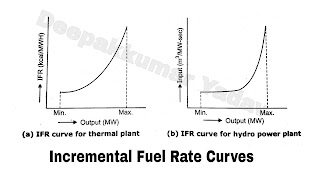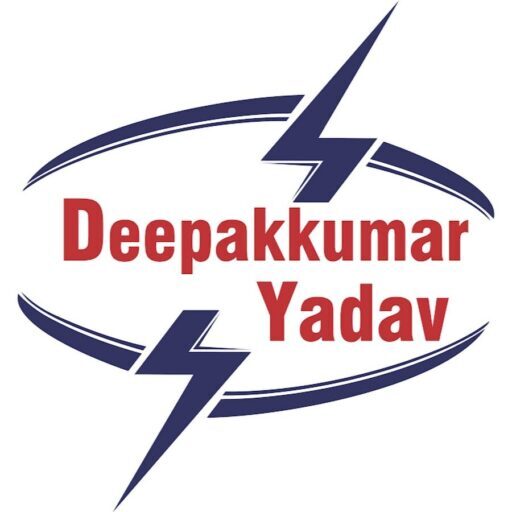Economic Loading of Interconnected Stations
- When number of generators are running in parallel in a generating station each of them can be loaded in such a way that it works at its maximum efficiency condition.
- Power systems are operated economically because it reduces the cost of fuel required for operation of the power system. Economic operation is achieved when the generators operating in the system share load in such a way that it reduces overall cost of generation.
- The main economic factor in power system operation is the cost of generating real power . In any power system this cost consists of two parts.
- Fixed cost : It is determined by capital Investment, interest on loans, tax paid, labour charge, salary given to staff and other expenses which are not dependent on the load supplied by power system.
- Variable cost : This cost depends upon the load supplied by generators, losses machines, transmission etc. dally load requirement and purchase or sale of power. The economic loading relates to the reduction of variable cost in our case.
- A power system is a combination of different modes of generation. The main systems which contribute to supply are thermal, hydro and nuclear power systems. The nuclear power stations, because of their safety etc. are required to run as its base-load only and there is no scope to schedule the generation of nuclear power stations. However, economic operation has conventionally been considered by proper scheduling of thermal and hydrogeneration only.
- For each machine there exist a fixed relationship between its output and input if a small Increase in output is required Input must correspondingly be increased. For any point on this curve the ratio of input to output is measured in kcal per hour and the output in kw; the incremental rate is obtained in kcal/kW. The reciprocal of Incremental rate is termed as incremental efficiency.
Input Output Operational Characteristics of Thermal Plants
- It is well known fact, that increase in difference between the temperature and pressure of input and output of heat operated device say a turbine, more economical power will be developed for the same amount of heat energy inputs.
- The overall efficiency of thermal unit is then determined by measuring the heat input and electrical energy output, and results expressed as a ratio of various loads.
- Such type of input-output curves can be developed for each generating unit Involved in the system. Efficient unit uses less fuel for given amount of power. Hence, it is a usual practice to load more efficient units before loading the less efficient.
 |
| Figure A |
Input Output Operational Characteristics of a Hydro Power Plant
- The input-output characteristics for a typical hydro-power plant is shown in Figure B.
- The Input water flow costs due to the capacity of storage , agricultural requirements and cost of running the plant during the dry season. Apparently, it seems that hydro-plant does not cost anything; it is not so.
- Also artificial storage requirements impose cost on water input to turbine as well as cost of control the water output from the turbine due to agricultural need.
 |
| Figure B |
Incremental Fuel Rate Curves
- The input-output curves being obtained from the operating data of the power station can utilized to get the incremental Fuel Rate’ (IFR or IR) curve from the relation.
IFR = Incremental change in input / Incremental change in output
- Thus , by calculating the shape of the input output curve at various points of operation, the profile of IFR can be obtained.
 |
| Figure C |
Incremental Fuel Cost Curve (IFC)
- This curve is obtained from IFR curve by multiplying the IFR by the cost of fuel per kcal. IFC is very significant in economic loading of generating unit because fuel cost governs the actual total cost. The nature of IFC curve will be similar to IFR curve.
- As we already know that nuclear power plants operated at base-load and at full output at all times. Hence, it is not necessary to consider them as an incremental source to the system.
- However , as they supply for the part of the supply system and due supply some portion of the energy that would have to be supplied by thermal or hydro-plants. They cause thermal or hydro-units to operate at a reduced incremental cost.
